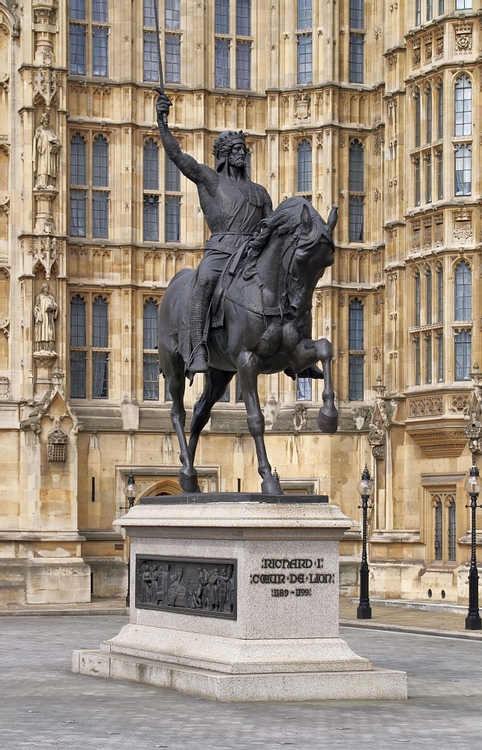Image Gallery
Richard I of England, Westminster
Richard I of England (r. 1189-1199) was the son of Henry II of England, and Eleanor, Duchess of Aquitaine. In 1189, he inherited England and several French territories (the Angevin Empire) from his parents and, the following year, left his domains to lead the Third Crusade. In the Holy Land, he defeated the powerful Sultan Saladin at the Siege of Acre and the battles of Arsuf and Jaffa, earning him the epithet “the Lionheart.”
Richard Coeur de Lion, as the statue is known (French for “Richard the Lionheart”), was built by Italian sculptor Carlo Marochetti and initially displayed in clay at the Great Exhibition of 1851 outside the Crystal Palace, London. Afterwards, money was raised by several wealthy patrons, including Queen Victoria, to cast the statue in bronze, which was completed in 1856, though not installed outside the Palace of Westminster until 1860. The statue depicts Richard as a muscular warrior on horseback in a crowned helmet and chainmail, with a sword held aloft in his right hand. During World War II, it was almost destroyed by a German bomb, which damaged the horse’s tail and Richard’s sword.


